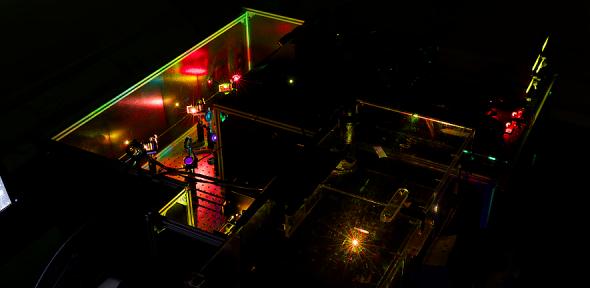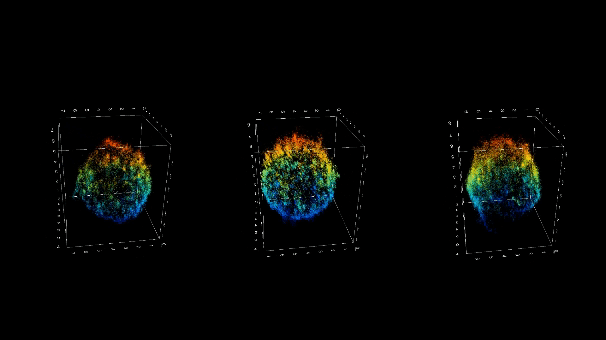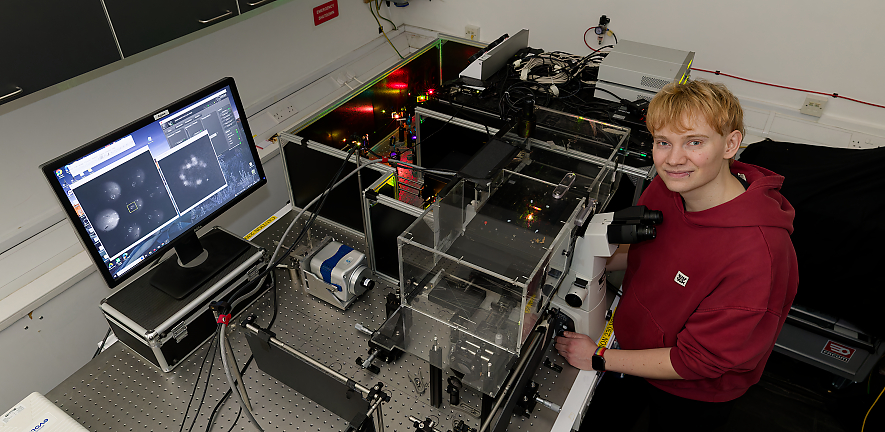
Single molecular light field microscope, courtesy Michael Webb © Michael Webb University of Cambridge
Three-dimensional single-molecule localisation microscopy made faster than ever using microlenses to ‘see around corners.’ Researchers have used this to observe living white blood cells at the nanoscale.
Researchers from the lab of Steven Lee have recently unveiled the potential of a new imaging technique, single molecule light field microscopy (SMLFM), at unlocking the mysteries of static and dynamic cellular processes on the nano-scale.
They showcase the ability to track single biomolecules across entire living cells which offers new opportunities for studying receptor clustering and signalling dynamics. This capability holds immense potential for unravelling the intricacies of cellular signalling pathways and advancing our understanding of disease mechanisms.

Published in Nature Communications, SMLFM uses a hexagonal array of microlenses to capture fluorescence from single fluorophores through seven different perspective views, producing a super-resolved 3D reconstruction of living cells.
Sam Daly, the PhD student who led this research, explains the significance: "Light Field addresses a longstanding challenge in 3D super-resolution microscopy, the fact that long experiments are not suitable for imaging living cells. Light Field enables imaging to occur ten times the rate of current state-of-the-art methods and has now been made available to labs that do not specialise in optical technologies by our efforts to streamline implementation. Our hope that this publication highlights the broad applicability of Light Field to the molecular biology community”.
Single Molecule Light Field Microscopy

This publication marks the second piece of work reported on SMLFM, which was first introduced in 2020 jointly by the Lee lab and Cambridge Advanced Imaging Centre. This new instalment describes an innovative approach to SMLFM that uses seven hexagonal microlenses to rapidly and accurately reconstruct the distribution and composition of receptors on immune cells. Using a combination of simulations and cellular imaging, this work marks a pronounced improvement over previous super-resolution technologies, which require very long experimental durations. Meanwhile, SMLFM facilitates a 10-fold speed improvement over the state-of-the-art ‘double helix point-spread function’.
In this work, the authors apply SMLFM to the imaging of immune receptors and cellular cytoskeletal structures. Nevertheless, the broad biological applicability of Light Field adds large translational benefit from investigating protein trafficking to cellular transcription factors.
Imaging living cells
The advantages of SMLFM extend far beyond imaging speed. The authors proceed to apply SMLFM to the tracking of immune receptors on living cells for the first time, capturing the dynamics of single immune receptors traversing the plasma membrane of primary murine B cells in minutes.
Professor Steven Lee, Professor of Biophysical Chemistry at the Yusuf Hamied Department of Chemistry at the University of Cambridge, comments: "In our lab, we strongly advocate for a simple idea: 'Seeing is believing.' However, attempting to image whole cells at the nanoscale has traditionally been a slow and challenging process, ultimately undermining confidence in our discoveries. We're thrilled to unveil Sam’s work, which has significantly accelerated 3D super-resolution imaging by nearly 10 times. It's important to emphasize that this achievement wouldn't have been possible without our exceptional interdisciplinary collaborators, including Dr. Kevin O’Holleran (Cambridge Advanced Imaging Centre), Prof. Simon Davis (University of Oxford), and Prof. Sir David Klenerman (University of Cambridge)"

